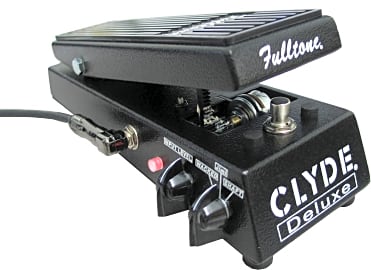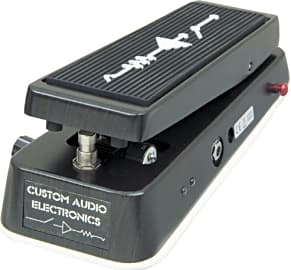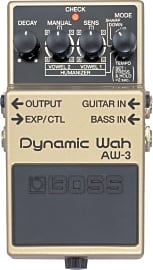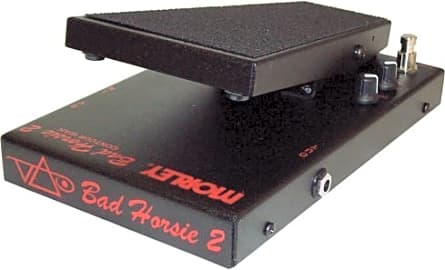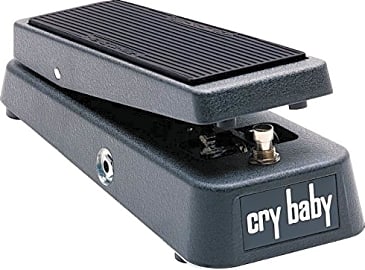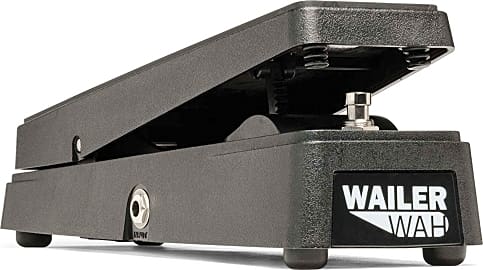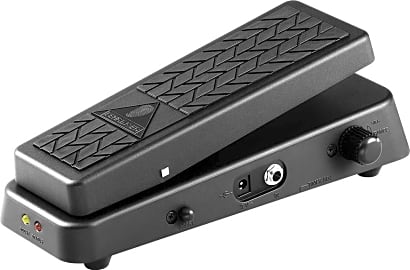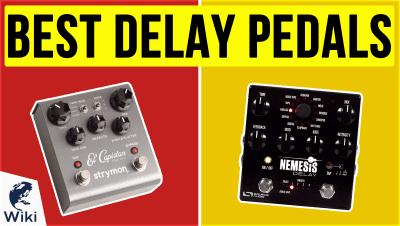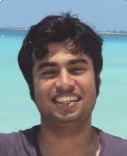The 10 Best Wah Pedals

This wiki has been updated 38 times since it was first published in October of 2015. There are very few effects as distinct as the wah, whether it be in rock, reggae, funk, or soul. We've included a range of pedals that spans all the way from entry-level options to professional grade models suitable for stadium performances. Whether you want to imitate the classic wail of Hendrix's guitar or invent the psychedelic sound of tomorrow, you'll find what you need here. When users buy our independently chosen editorial selections, we may earn commissions to help fund the Wiki.
Editor's Notes
March 01, 2020:
I recall buying my first wah-wah pedal at age 14, because I really wanted to play the riff to ‘Voodoo Child’ with all the effects. I was a cash-strapped teenager, and to me, the pedal made all the difference in the world then, but looking back, it was a very basic model that lacked the tonal ranges and features that these sophisticated models offer, and given the choice today, I will inevitably always pick a high-end Cry Baby or, if I want a spring-loaded model, the Morley Steve Vai Bad Horsie, simply because I can now appreciate the difference in quality.
I’ve introduced a couple of new models like the high-tech Electro-Harmonix Wailer and beginner-friendly Boss AW-3. Unfortunately, I had to remove the Ibanez because of availability issues. If I could have found another wah-wah pedal as good as the WD7 Weeping Demon from Ibanez then I would have put that in. The company makes some great electric guitars and I remember growing up with those along with Fender guitars; however, they aren’t really as much of a player in the frequency pedal market, and they were a bit late to the game, so to speak.
By contrast, brands like Dunlop and Vox have literally shaped the market, with the Dunlop Cry Baby being one of if not the most iconic wah-wah pedal. Many iterations and variations of the Cry Baby exist, and I’ve left in some of the best to-date, including the Dunlop 535Q Cry Baby - of which there is a mini version, but I prefer the full-sized model- and the Dunlop GCB95 which a rehash of Cry Baby’s vintage design with a nice aggressive sweep. I’ve also left in the Dunlop CAE MC404, which is not technically a Cry Baby, but a collaboration between the Cry Baby and Custom Audio Electronics design teams. Many of the newer models also use fasel inductors for that classic ‘crying’ sound that was a hallmark of the vintage Cry Baby.
At the same time, there were 4 Dunlop models in the list, so I wanted to introduce a little brand variety by taking out the less-than-exceptional models, so I removed the KH95, which is a Cry Baby based on Kirk Hammett’s signature sound from his equalizer. Not that I have anything wrong with Metallica, in fact, I quite like them – though I am less of a metal fan than I am of classic rock. They even have one for Slash, who’s my favorite guitarist of all time – I eventually decided to list a few of these signature models as ‘Special Honors’ mentions, in case you’re looking to emulate the sound of your favorite guitarist. I would otherwise recommend non-signature pedals since they offer a greater range of control features.
Special Honors
Dunlop Cry Baby SC95 Tuned to a lower frequency and offering a large dynamic range and a wide sweep, the Dunlop Cry Baby SC95 was created to honor and emulate the distinctive sound of the legendary lead guitarist for Guns N’ Roses, Slash, who himself has extensively used the Cry Baby throughout his career to help create that unique, gritty, blues-inspired signature sound that shines through during so many of his solos. jimdunlop.com
Dunlop Cry Baby JH1D Wah-wah pedals were a relatively new invention around the time that Jimi Hendrix burst onto the scene in the 60’s. Suffice it to say that Jimi produced some iconic tunes with just a wah pedal and a fuzz box, and there are few players as synonymous with wah-wah pedals as Hendrix is. The Dunlop Cry Baby JH1D was designed to recapture those throaty, expressive vintage crying ‘wah’ tones that are reminiscent of many of his classics. jimdunlop.com
Dunlop Cry Baby KH95 A must-have for thrashers, the Dunlop Cry Baby KH95 was developed in collaboration with the famous metal guitarist Kirk Hammett of Metallica, and features his iconic sound, along with cool skeleton graphics and his signature emblazoned right there on the pedal. Dunlop’s engineers took the same volume, tone, and EQ settings that Kirk dials in on his Cry Baby Rack Wah during tours and ‘injected’ them into this pedal. jimdunlop.com
A Brief History of the Wah-Wah Pedal
Discovered in the 1920s by brass musicians who realized they could use mutes to make their instruments weep like sad children, the wah effect quickly became characteristic of jazz and blues music alike. For forty years, the effect remained a manual one until Bradley J. Plunkett designed the first electronic wah-wah pedal for Warwick Electronics in 1966.
Using a breadboard, transistors, and the volume-controlling pentiometer from a Vox Continental volume pedal, Plunkett was able to replicate electronically the fluttering mutes of crying brass instruments. A sound effect that was previously limited to instruments with brass bells could now be achieved using any amplified instrument from the guitar to the violin or even the snare drum, if one happened to be in the mood for experimenting.
Initially intended as an effects pedal for wind instruments, allowing jazz saxophonists and clarinetists to achieve the wah effect without having to grow a third arm, Plunkett's friends insisted upon hearing the pedal in action for the first time that the pedal be endorsed by and marketed toward electric guitarists.
Mere months after the pedal's release in February 1967, two of America's leading power trios, Cream and Jimi Hendrix Experience, recorded hit songs using Plunkett's prototype to great effect, resulting in an unexpected spike in demand for the new technology.
In no time at all, the wah effect unlocked new doors in many popular genres, but most of all, funk, with most funk guitarists today insisting no pedal collection is complete without a wah-wah pedal.
A Solomon's Key to the Temple of Funk
According to legend, Solomon, a king and a magician, possessed the wisdom and the power to compel both angels and demons: opposite ends of a spectrum constructively bent to Solomon's will. The light and the dark, the high and the low, blended together, surreptitious servants at Solomon's every beck and call.
That is how the wah-wah pedal works.
Movement of the tip of your tongue and your lips controls the size of the second main chamber situated near your lips.
Using transistors to alter harmonics and a volume-style pedal that allows the player to control the resonant peak of any given frequency, wah pedals emulate the human voice in rather uncanny ways.
The human voice relies upon the tongues ability to control the size of two distinct resonating chambers in the mouth. Movement of the base of your tongue controls the size of the first main chamber situated near the top of your larynx. Movement of the tip of your tongue and your lips controls the size of the second main chamber situated near your lips.
As you make a wah-aow sound with your mouth, the high tones become louder than the low tones and then the low tones become louder than the high tones. By giving you the ability to emulate these sounds with an instrument, the wah pedal effectively places the instrument in a kind of virtual resonating chamber similar to that of the human mouth. As a result, an electric guitar can be used to replicate a human voice, allowing a highly skilled player to talk through the guitar the way Frank Zappa does during his "Inca Roads" solo.
Choosing a Wah Pedal to Suit All Your Needs
The key to choosing a wah-wah pedal that works right for you is knowing when and how you'll be using it most often. Which genre or genres will you be playing? Will you be using your pedal to add a bit of flare to some heavy distortion? Or will you be engaging your audience in a full-blown conversation?
The key to choosing a wah-wah pedal that works right for you is knowing when and how you'll be using it most often.
For players interested in using wah effects similar to the way Eric Clapton, Jimi Hendrix, or Frank Zappa do, a volume-style, expression pedal is really the only option. If you really want to make your guitar talk, you need to be able to control as much of the effect as possible without having to bend over and twist too many knobs in the middle of playing your solo.
For those interested solely in recreating the wacka-wacka sound indicative of a lot of funk and disco music, subtle and constant control may not be quite as important. Thus, a press-and-release pedal or a stompbox with a fixed wah effect will suit all your funk and disco needs.
For bassists, a wah pedal with too much emphasis on higher tones may conflict with the style of music you're playing, and may even drown out some of tones from the other instruments in the band if used excessively. A wah pedal that allows you to control the range of the effect would be ideal.
In the end, it's important to know where you want to take the wah effect, whether or not you are the only person in the band using it, and if not, which pedal will allow you to complement the other wah effects in the project rather than clash with them.




